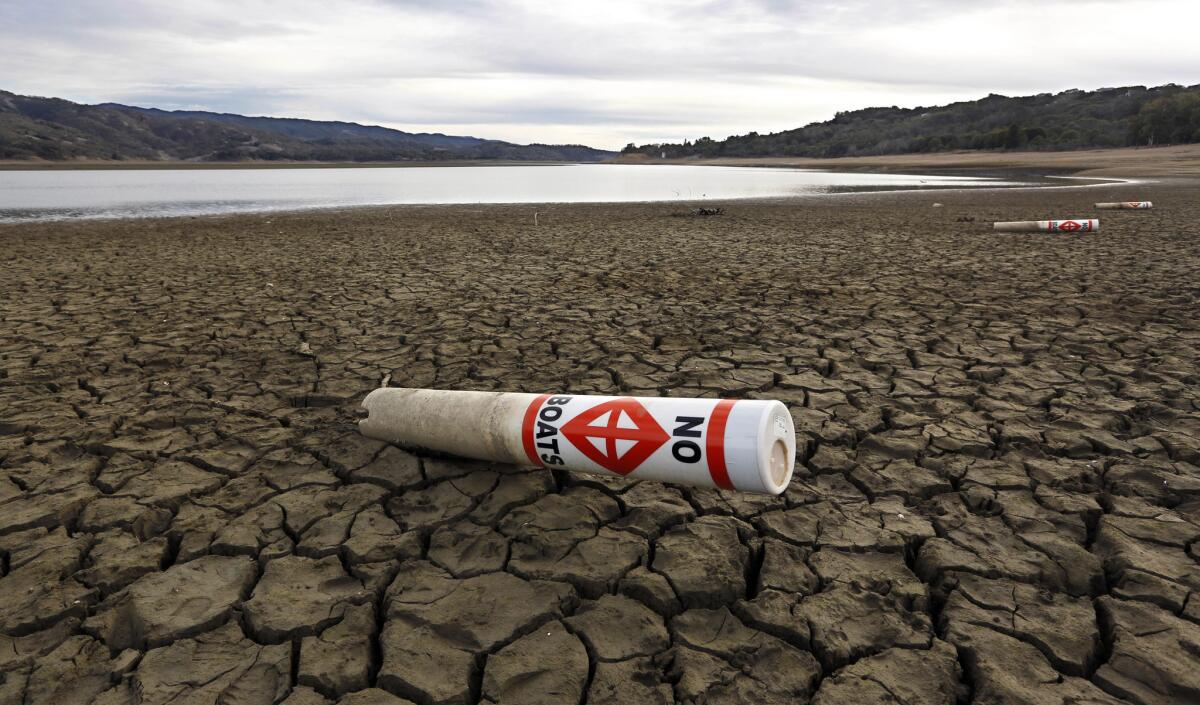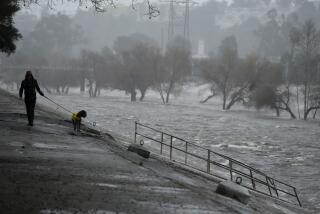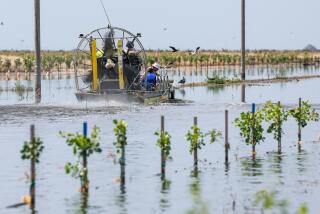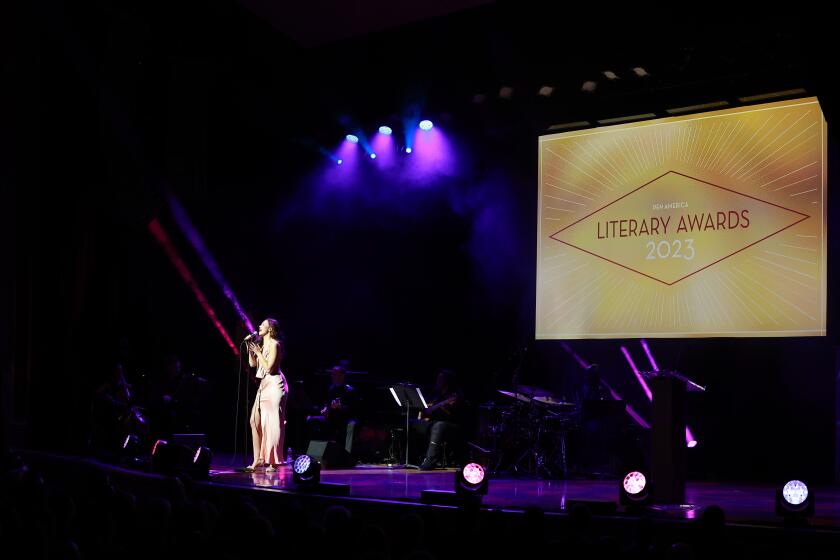California and the literature of water

In this February 2014 photo, a warning buoy sits on the dry, cracked bed of Lake Mendocino near Ukiah, Calif.
On a recent visit to New York, I found myself in a conversation with an East Coast writer about William T. Vollmann’s “Imperial” — a monumental study of water politics and Southern California’s Imperial County — when he said, “I’m so sick of you Californians and your obsession with water. When will you get over it?”
The answer, of course, is never. The other answer is: Just wait. Water as resource, water as political and conservational hot button … it’s coming for you.
I couldn’t help recalling this as I read Steven Johnson’s terrific piece “Let It Rain: Why California’s Water Crisis is Everyone’s Problem” on Medium this morning.
Johnson’s point is that the eastern view of California as a place where “all the ‘lifestyle’-seekers who set off for the Pacific high … are at last confronting the limits of Mother Nature” is as self-serving as it is ridiculous, since “[a]nyone living anywhere in the United States — apart from the most radical of the off-the-gridders, most of whom are probably in Northern California anyway — is dependent on a vast web of human engineering designed specifically to mess with Mother Nature’s intentions.”
In this, then, as in so many areas, California is ahead of the curve.
Vollmann is just one of the writers who has understood this, going back more than 100 years. His “Imperial” frames water as a kind of through line in the narrative of the state. “When the Imperial main canal first started running water through it in 1901,” he told me in 2009, “there was a huge headline in the paper: Water is Here.”
Such a line is reminiscent of William Mulholland’s famous “There it is. Take it,” uttered in 1913 to the crowd assembled to watch the water cascade through the first Los Angeles aqueduct, in the Newhall hills.
Mulholland, of course, was early L.A.’s water czar, who built that aqueduct to bring water from the Owens River Valley to the growing metropolis.
“As early as 1900,” explains Norris Hundley in his history “The Great Thirst: Californians and Water,” “the city’s original four square leagues (some twenty-seven square miles) had nearly doubled (to forty-three square miles), while the population, as a result of the annexations and the arrival of newcomers, also doubled during the preceding decade to 100,000. … [T]he superintendent of the new municipal water system startled the public by announcing that the Los Angeles River, despite its vast capacity, could not long support the city at its current growth rate. ‘The time has come,’ he proclaimed in 1904, ‘when we shall have to supplement its flow from some other source.’”
There was, however, also a subtext (in Los Angeles, there is almost always a subtext), having to do with Mulholland’s fellow civic leaders — Henry Huntington, Harry Chandler, Harrison Gray Otis — who used this public initiative for very private ends.
That is the story dramatized in “Chinatown,” not to mention Mary Austin’s 1917 novel “The Ford,” in which these local luminaries bought up vast tracts of the San Fernando Valley at rock bottom prices, ultimately generating more than $100 million in profit after the aqueduct was built.
It’s easy to moralize, as Johnson’s Medium piece suggests, about greed and shortsightedness and hubris — the same judgments always leveled at California from the east. More useful, however, is a different reading: as L.A.’s creation myth, the moment when the seeds of the modern city first took root.
The history of Southern California, after all, has always been a history of water — our use of it, our conservation and our waste. Water marks the literature of the region going back to Austin’s 1909 masterpiece “The Land of Little Rain,” which explains: “This is the land of three seasons. From June on to November it lies hot, still, and unbearable, sick with violent unrelieving storms; then on until April, chill, quiescent, drinking its scant rain and scanter snows; from April to the hot season again, blossoming, radiant and seductive.”
The passage reminds me of Joan Didion, who in her 1968 essay “Los Angeles Notebook,” observes, “Easterners commonly complain that there is no ‘weather’ in Southern California, that the days and the seasons slip by relentlessly, numbingly bland. That is quite misleading. In fact, the climate is characterized by infrequent but violent extremes: two periods of torrential subtropical rains which continue for weeks and wash out the hills and send subdivisions sliding toward the sea; about twenty scattered days a year of the Santa Ana, which, with its incendiary dryness, invariably means fire.”
This, then, is the ecosystem of the region, and even more, the condition (physical, metaphysical, environmental and climactic) on which Los Angeles is built.
“From an airplane,” Morrow Mayo wrote in “Los Angeles,” an overview of the city published in 1933, “Los Angeles today resembles half a hundred Middle-Western-Egyptian-English-Spanish communities, repainted and sprinkled about. Its population is about 1,400,000. It is, and has been for ten years, the largest city in America in area, and people often wonder why. The answer is Water.”
Water, yes. The answer and the question. Not just for California but for everyone.
twitter: @davidulin
More to Read
Sign up for our Book Club newsletter
Get the latest news, events and more from the Los Angeles Times Book Club, and help us get L.A. reading and talking.
You may occasionally receive promotional content from the Los Angeles Times.







